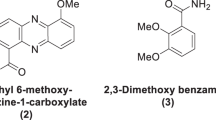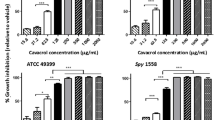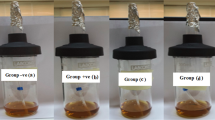Abstract
SALICYLATE continues to be a leading cause of accidental poisoning in the United States; in 1964 there were more than 16,000 cases of accidental aspirin ingestion among all age groups, accounting for 25.8 per cent of all accidental poisonings reported1. Existing methods for the treatment of salicylate poisoning are aimed at alkalinization of the urine and extrarenal removal of the drug2,3. The natural elimination of salicylate in man is a slow process. The average half-life of a single 1 g dose of aspirin is reported to be 6 h (ref. 4), and high doses have given half-life values up to 19 h (ref. 5). Administration of salicylate labelled with carbon-14 to man6 has given the following metabolites (here reported as average mean values): free salicylate 61 per cent; salicylic phenolic glucuronide 22 per cent; salicyluric acid 8 per cent; salicylic acyl glucuronide 5 per cent; and gentisic acid 1 per cent. The conjugates of salicylic acid are less diffusible across cell membranes and thus have given higher clearances7. Furthermore, the excretion of salicyluric acid after administration of acetylsalicylate or salicylate is limited by the ability to conjugate salicylate with glycine rather than the excretion capacity of the kidneys8.
This is a preview of subscription content, access via your institution
Access options
Subscribe to this journal
Receive 51 print issues and online access
$199.00 per year
only $3.90 per issue
Buy this article
- Purchase on SpringerLink
- Instant access to full article PDF
Prices may be subject to local taxes which are calculated during checkout
Similar content being viewed by others
References
National Clearinghouse for Poison Control Centers Bull. (May–June 1965).
Smith, M. J. H., in The Salicylates (edit. by Smith, M. J. H., and Smith, P. K.), 233 (Interscience, New York, 1966).
Winters, R. W., in Salicylates (edit. by Dixon, A. St. J., Smith, M. J. H., Martin, B. K., and Wood, P. H. N.), 278 (Little, Brown and Co., Boston, 1963).
Bedford, C., Cummings, A. J., and Martin, B. K., Brit. J. Pharmacol., 24, 418 (1965).
Swintosky, J. V., J. Amer. Pharm. Assoc., 45, 395 (1956).
Alpen, E. L., Mandel, H. G., Rodwell, V. W., and Smith, P. K., J. Pharmacol. Exp. Therap., 101, 1 (1951).
Milne, M. D., in Salicylates (edit. by Dixon, A. St. J., Smith, M. J. H., Martin, B. K., and Wood, P. H. N.), 26 (Little, Brown and Co., Boston, 1963).
Elliott, H. C., Proc. Soc. Exp. Biol. and Med., 122, 861 (1966).
Trinder, P., Biochem. J., 57, 301 (1954).
De Marco, J. D., and Marcus, A. D., J. Pharm. Sci., 1010 (1962).
Author information
Authors and Affiliations
Rights and permissions
About this article
Cite this article
KRUPKA, L., RACLE, F. & MARDEROSIAN, A. Degradation of Salicylate by Aspergillus niger. Nature 216, 486–487 (1967). https://doi.org/10.1038/216486a0
Received:
Revised:
Published:
Issue Date:
DOI: https://doi.org/10.1038/216486a0
This article is cited by
-
Salicylate Degradation by the Fungal Plant Pathogen Sclerotinia sclerotiorum
Current Microbiology (2013)
-
Untersuchungen über Vorkommen und Wanderung von Aflatoxin B1 und seine Veränderungen bei einigen lebensmitteltechnologischen Prozessen
Zeitschrift für Lebensmittel-Untersuchung und -Forschung (1969)
Comments
By submitting a comment you agree to abide by our Terms and Community Guidelines. If you find something abusive or that does not comply with our terms or guidelines please flag it as inappropriate.



